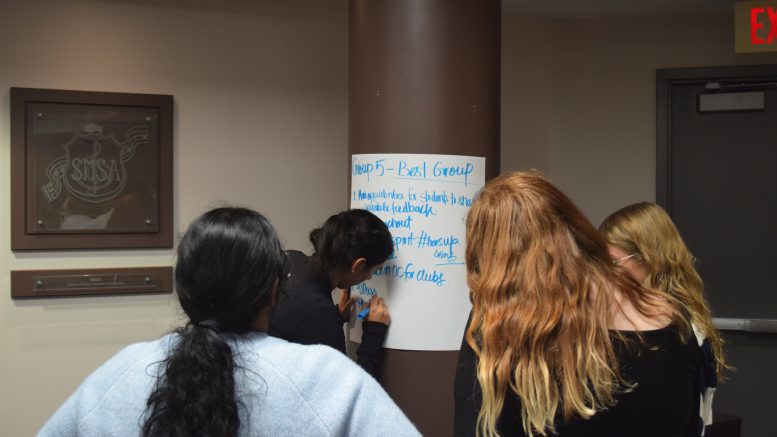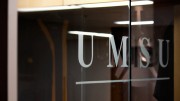The University of Manitoba Students’ Union (UMSU) held a strategic planning consultation at its board of directors meeting on Oct. 17 at the UMSU council chambers.
Sandra Woloschuk, UMSU’s strategic plan facilitator, led the consultation.
“I’ve come this evening to ask you three questions,” said Woloschuk, to guide the discussion. “This will help inform the objectives of the strategic plan.”
Once potential objectives are gathered, there will be two planning days to review them and determine a strategic approach, followed by developing action plans, said Woloschuk. This includes outlining vision, mission, objectives, strategies and action plans. “It’s the VMOSA strategic planning model from the University of Kansas, and it is an action-oriented model that has been very successful.”
Members of the UMSU board of directors, as well as students-at-large in attendance, broke into five groups around the council chambers to write their responses on large flipcharts. “If you’re not sure if your idea is possible, write it down. Someone else might be able to imagine a way to bring that idea to light,” stated Woloschuk.
The first and one of the most important questions that was posed, according to Woloschuk, was “where do we go from here, and why?” Board members were invited to imagine how UMSU could take new directions or improve existing efforts. Although constraints such as time and money were acknowledged, Woloschuk encouraged participants to think about what could be achieved if resources were reallocated or if new ones became available. In addition, she asked members to brainstorm ideas that could create a significant impact within one, three or five years.
Each group was then asked to share one big idea before moving on to the next question.
Rachhvir Dhaliwal, UMSU’s vice-president university affairs, shared that their group’s big idea was advocating for more mental health services at the U of M. Other responses included greater financial transparency, working to make transportation more cost effective for students and greater assistance in educating students on the roles of the union.
The second question posed was “what do we already do that best serves students?”
Woloschuk continued, “you run businesses, you run programs, you offer services, you have successes and sometimes the danger with a strategic planning process is we get really excited about the big idea, and we forget the important work that’s being done.”
The third and final question was “is there anything you could afford to put on the shelf for a year to take your other resources and invest them in the big ideas that folks might come forward with?”
Responses to the final two questions were not publicly shared during the board meeting due to time constraints, though Woloschuk indicated that all responses would be presented to the strategic planning working group.





